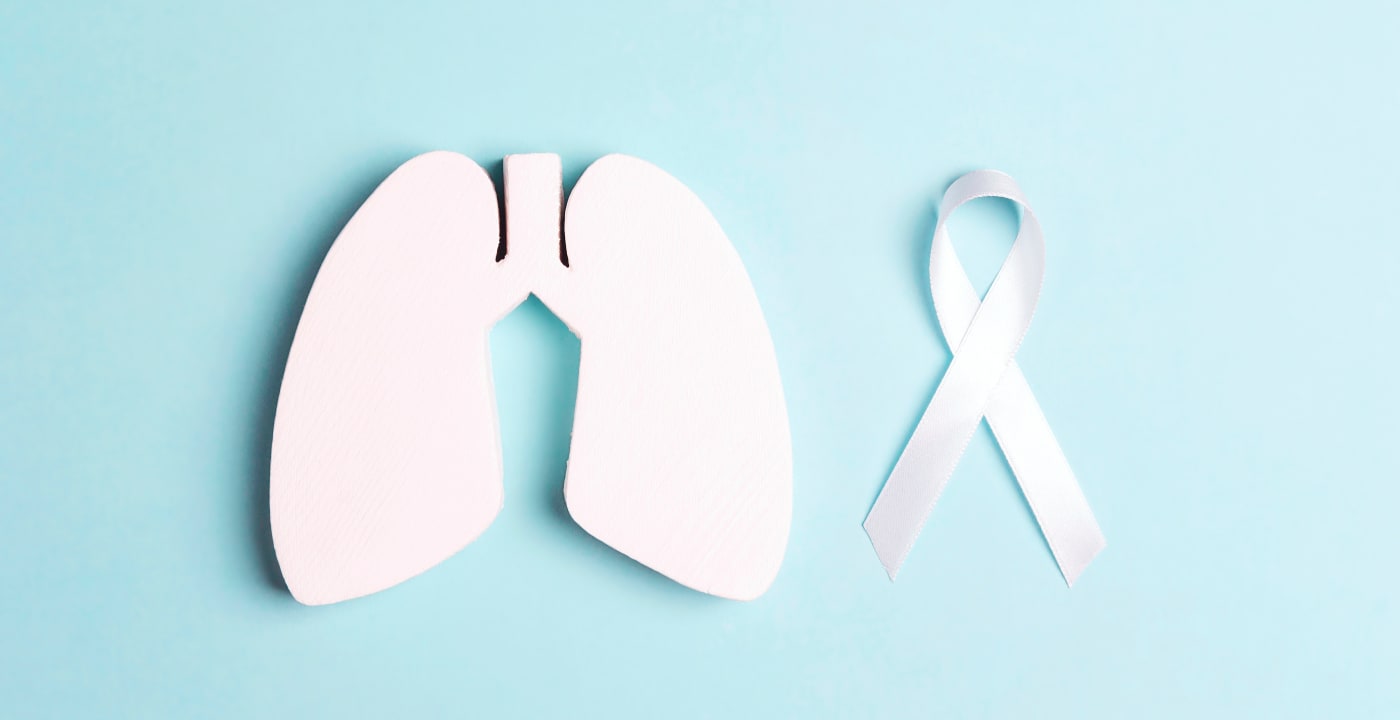Should you get a lung cancer screening?

At a glance
- Lung cancer is a leading cause of death in the U.S., but screening is effective at catching it early
- Eligibility for lung cancer screening is based on age, pack-year history and smoking status
- Symptoms of lung cancer don’t typically appear early, but may include coughing up blood and hoarseness
Lung cancer is the leading cause of cancer death for both men and women in the United States. And, like other cancers, getting an early diagnosis means significantly better chances for effective treatment. However, diagnosing lung cancer early can be challenging since symptoms are not often present until later stages of the illness.
Fortunately, lung cancer screening, like a colonoscopy or a mammogram, is a way to find cancer before it causes symptoms. Studies have shown lung cancer screenings reduce the risk of dying from lung cancer.
“We know from several high-quality studies that annual lung cancer screening with low-dose [computed tomography] CT scan is extremely effective at catching lung cancer early,” says MultiCare pulmonologist Abhishek Biswas, MD. “In fact, one unnecessary death from lung cancer is prevented for every 320 CT scans performed in the United States.”
Who is eligible for lung cancer screening?
It’s no secret that smoking is the leading risk factor for lung cancer. Nine out of 10 lung cancer cases in men and eight out of 10 in women are caused by smoking. And around 80 percent of all deaths from lung cancer can be attributed to smoking.
This is why lung cancer screenings are geared toward current smokers or those who used to smoke but have quit in the past 15 years. The guidelines for screening take into account age and “pack year.”
A pack year can be calculated by multiplying the number of packs of cigarettes someone has smoked per day by the total number of years they have smoked. For example, a person who has smoked one pack per day for 20 years and someone who has smoked two packs per day for 10 years both have a 20 pack-year history.
Just last year, the guidelines for lung cancer screening were updated by the U.S. Preventive Services Task Force. The last time they were updated was in 2013. The updated guidelines state people should be screened if they:
- Are age 50 or over (lowered from 55), and
- Have a minimum pack-year smoking history of 20 (lowered from 30), and
- Currently smoke or have quit in the last 15 years
If you meet these criteria, it’s a good idea to be screened for lung cancer, even if you are not experiencing any symptoms.
The screening is covered by most insurance companies, including Medicare and Medicaid, if you meet the high-risk criteria. Screening should be done annually for as long as recommended by your provider.
How is a lung cancer screening performed?
Lung cancer screenings consist of getting a low-dose CT scan. CT scans show greater detail than a traditional X-ray, so they are better at detecting small lesions and can find cancer at an earlier stage. Having a low-dose CT scan means you are exposed to less radiation than a typical CT scan.
What if a spot on the lungs is detected?
If suspicious nodules are identified during a lung cancer screening, your doctor may refer you to get a biopsy to find out if the spot is benign (not cancer) or malignant (cancer).
“A discussion with your doctor is essential at this stage, as not all lung nodules need to be biopsied. MultiCare is committed to taking care of you through this process,” says Dr. Biswas.
If a biopsy is recommended, MultiCare Tacoma General Hospital now offers minimally invasive robotic-assisted bronchoscopy to help diagnose the disease sooner and with greater accuracy.
Using an ultra-thin catheter that allows deep navigation into the lung, robotic-assisted bronchoscopy enables physicians to obtain tissue samples from hard-to-reach areas with minimal risk of complications.
“Lung nodules that were considered too small to biopsy in the past can now be biopsied and, thus, cancer can be identified at an earlier stage,” explains Dr. Biswas. “Early diagnosis truly saves lives.”
What are the symptoms of lung cancer?
Symptoms of lung cancer typically do not appear early. Those with lung cancer in a later stage may experience:
- A cough that doesn’t go away or worsens
- Coughing up blood
- Hoarseness
- Shortness of breath
- Wheezing
- Chest pain that worsens with coughing, deep breathing or laughing
- Bronchitis or pneumonia infections that don’t go away or keep coming back
- Feeling weak or tired
- Loss of appetite
- Unexplained weight loss
If lung cancer has spread to other parts of the body, symptoms may include:
- Swollen lymph nodes, such as in the neck or above the collarbone
- Bone pain, such as in the hips or back
- Yellowing of the eyes and skin (if cancer has spread to the liver)
- Headache, weakness or numbness of a leg or arm, balance problems, dizziness or seizures (if cancer has spread to the brain)
These symptoms are often caused by medical problems other than lung cancer, so be sure to speak with your doctor to rule out any serious conditions.
How can you prevent lung cancer?
“The most important step you can take to prevent lung cancer is to stop smoking today,” advises Dr. Biswas.
And, if you do smoke, it’s important to quit as soon as you can.
Exposure to secondhand smoke, radon in the home or carcinogens in the workplace are other risk factors. Avoiding these as much as possible is advised.
What's next
- Take our lung cancer risk assessment to see if you should be screened for lung cancer
- Learn more about lung cancer prevention and screening at MultiCare
- Calculate your smoking pack years



